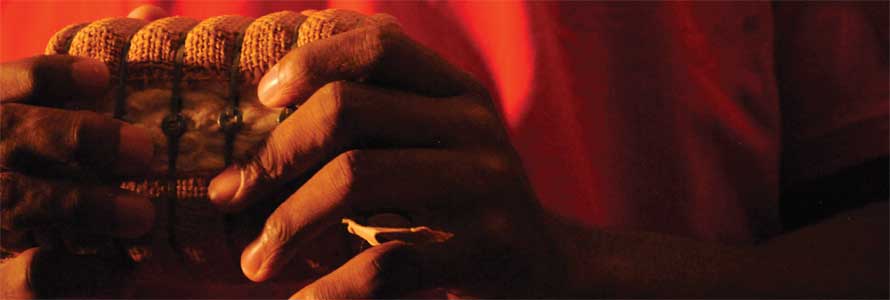Cotton is NOT the Enemy
Allie Spivey

At a Texas Tech University football game an Under Armour™ advertisement ran on the big screen that would sink in deep with cotton producers and start a revolution in cotton production.
The Under Armour™ advertisement read, "Cotton is the Enemy."
Brad Robb, vice president of communications at The Cotton Board, responded to Under Armour's™ anti-cotton campaign.
Under Armour's™ phrase did not make Cotton Incorporated mad, Robb said, it made them want to improve the performance of cotton.
Shawn Wade, the director of policy analysis and research for Plains Cotton Growers reminisced about the first time he heard the phrase "Cotton is the Enemy."
"Here at Plains Cotton Growers we are the voice for farmers around the high plains," Wade said. "When this ad came out, it did not give any of us a warm and fuzzy feeling."
The ad inspired Cotton Incorporated to stay in the lab and create technology that could be applied to cotton to make it more of a performance fiber for athletic purposes. Robb said the trick was to get cotton products in Under Armour's™ marketing mix.
Cotton Incorporated got to work on finding a way to break into the athletic apparel industry on a new level. The goal was to convince big name companies that cotton could be in everyday casual wear, as well as in athletic performance apparel.
Under Armour™ began researching ways to sell more performance gear by finding new ways to satisfy customers and made a shocking discovery. Kevin Plank, CEO of Under Armour™ commented on their research in a Forbes Magazine interview.
"We looked into our customers' closets and found 30 T-shirts. Four were synthetic, and the other 26 were cotton," Plank said.
From this research, a partnership was almost destined to become reality. In early 2009, Cotton Incorporated's phone rang and it was Under Armour™ on the other line. They mentioned Under Armour™ may have thought cotton was the enemy, but their consumers certainly did not.
Under Armour™ gave Cotton Incorporated eight weeks to prove to them their cotton technologies were the way to go. For product research and demonstration, eight weeks is an incredibly short amount of time.
Cotton Incorporated got busy performing tests on their new cotton technology they were going to showcase to Under Armour™ called Charged Cotton. They checked to make sure their water repellent technology could compete with other performance apparel by performing water drop, drying speed and wear tests. The results were right on point.
The reason Charged Cotton dries faster is because the finishing technology transfers water/perspiration from the inside of the garment to the outside where it can evaporate more quickly. This technology was unheard of until Cotton Incorporated created it.
The privacy of the launch was extreme. Cotton Incorporated representatives were escorted to a building behind the Under Armour™ facility to discuss and test the Charged Cotton product. Privacy was important to Under Armour™ because they had promoted the phrase
"Cotton is the Enemy" for so long that it would seem hypocritical if they were caught working with the enemy if this partnership failed. Thankfully for cotton and for Under Armour™, it did not.
When the eight weeks was up, Cotton Incorporated proved to have equal or higher performing test fabrics than anything Under Armour™ had to offer. Additionally, Plank secretly wear-tested the shirts around the office and gave his approval. He commented on the partnership in an interview with CNBC.
"We are seeing great success in our two-fold strategies of innovating to drive better performance products with higher prices in our core program, while expanding our reach beyond our core program with new products."
Thus, the Charged Cotton line was born. The line was finally launched in March 2011 despite the peak in cotton prices, which was at an all- time high.
"It's hard to believe a company would launch a product when cotton was the highest it had been in years, but that just goes to show how successful and fearless Under Armour™ is," Robb commented.
The estimated amount of units needed for the launch averaged out to approximately 10,000 bales of cotton. By the end of April 2011, Under Armours'™ sales increased by 1.2 million dollars. In the third quarter, Under Armour™ officials reported a 42 percent net profit increase of $363 million, compared to $277 million increase in the previous year. Charged Cotton had matched sales of Under Armour's™ all time synthetic T-shirt, as well. Since the initial launch, they have added T-shirts for women, sleeveless T-shirts, water-repellent hoodies and women's capris.
Robb cheerfully commented on these sales figures, "To say Charged Cotton products are being accepted by consumers is a huge understatement."
Soon, other big name brands were knocking at Cotton Incorporated's door to adopt this innovative cotton technology. Once the technology is adopted, the brand is free to call it whatever they desire. Big names such as Puma™, L.L. Bean™, Polarmax™ and Bobby Jones™ have adopted Cotton Incorporated technologies.
Robb confidently said, "Cotton is a fabric and a fiber with which consumers have become endeared to over the years and they love it."







